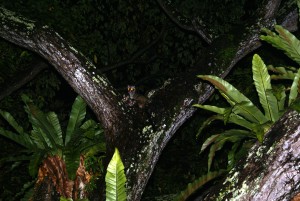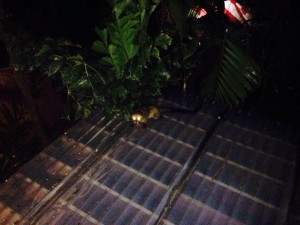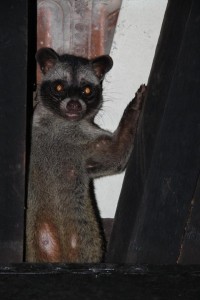We’ve discussed the dangers and consequences of trapping wild civets many a time (1, 2, and 3), and we’re doing so again today. Trapping is a problem that is still prevalent and remains a threat to our civets and other animals that make up our unique wildlife.
It is a worrying phenomenon. Click on the links above and you will see just how much physical and psychological trauma a trapped civet goes through. Imagine their fear and helplessness, which is a dire result of their inquisitiveness and sometimes, when the cage is baited, their desperation and responsibilities to feed their young.
Maternal instinct is a wonderful thing. As humans, we celebrate it. To most animals, it is a duty that determines the survival of their young. The civet is one of these animals – solitary in nature, but faithful to her young once they are born until they are mature enough to survive on their own. Many of these urban civet families nest in trees, while a handful of them live in the roof spaces of landed properties too. Cosy, warm, and safe – or so it seems.
They don’t mean to be a nuisance when they scratch the roof floors. Nor when they play on the roof late at night. They are just being animals, and they mean the residents no harm. But – albeit understandably – many people don’t see it that way. Whatever that is on their roofs can seem to be an “invasion” of their homes, keeping them awake at night with all the noise that they make – so they think that it is only right to get rid of them. The next evening, the civets notice a strange apparatus lying a few metres in front of them.
Perhaps they sniff about it a little, they poke about it with their tiny paws. The mother civet notices a banana within it, and is glad that food has come easy tonight. She ushers her babies back into the roof spacing, and ventures into the metal opening. She takes the banana, and the door of the cage flings shut.
This startles the babies. They try, for a while, to get their mother free while she paces within it, at times trying to run through the boundaries, smashing her nose straight into the bars. Gradually the sun comes up. The babies climb up the trees to hide. Confused, they watch as their mother is taken away by some strange people. Overnight, their lives and their mother’s are no longer cosy, warm, nor safe – or so it seemed at first.
It is hard, especially when you understand both sides of the story. You see why roof spacings are so attractive to the civets. And yet, you also see why people would not like to have something mysterious living in their homes. It is only natural both sides are acting to protect their families and to ensure the best quality of living. However, is there really no compromise that can be achieved?
Trapping is a horrible thing. It causes injuries and instills fear within the animal. But on another level, it separates mothers from their babies too. Furthermore, it is not only the mother civets that end up getting trapped and taken away. Baby civets are also susceptible to traps. Sometimes, they lose their lives as a result of a faltering immunity which in turn is a result of the stress endured while in a trap.
We have always encouraged, on our blog, for everyone to share their living spaces with our wild animals. Many of them will not even attack (unless provoked), and are more generous with their spaces than we are with ours. Remember that Singapore used to be, quite literally, a jungle. It was our urbanization that has driven many of our animals to extinction and to those that remain, desperation.
If anything, it is time to be gracious to these animals, to allow them the simple pleasures of their lives, to raise a family up in a safe shelter and be able to survive in this sometimes harsh, urban landscape. Let’s not use traps to take those pleasures away from them, and to learn to live in harmony with our native civets and other wildlife, even if it means tweaking our mindsets, or changing our lifestyles just so they can breathe easier.



 This was shared with us two months ago by Craig Williams, who was lucky enough to spot one of these elusive creatures during his night walk.
This was shared with us two months ago by Craig Williams, who was lucky enough to spot one of these elusive creatures during his night walk.
 Clare Haxby shared this photo of an adorable civet hiding in her house 2 years ago. The civet was lactating then, and the babies she had then are most probably full-grown civets now.
Clare Haxby shared this photo of an adorable civet hiding in her house 2 years ago. The civet was lactating then, and the babies she had then are most probably full-grown civets now.